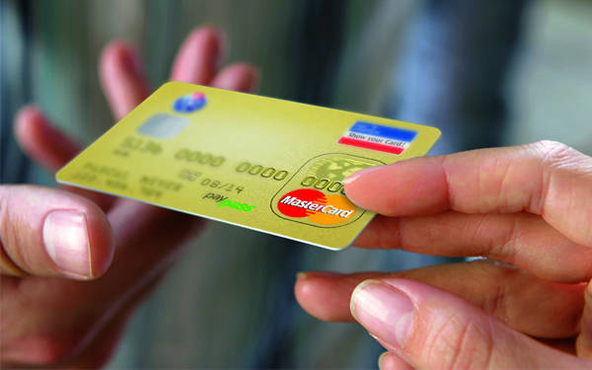You’ve Been Signed up for a Credit Card Program You’ve Never Heard Of

Update: The bank has just responded to my complaint through CFPB’s communication channel to inform me that they have done everything I had requested: the charges have been reversed and the delinquencies have been removed from my credit files with the three national credit bureaus. So CFPB’s complaint system does work as intended, and quite swiftly at that.
Some of you will remember that three months ago, the Consumer Financial Protection Bureau, in its very first enforcement action, levied a heavy fine on Capital One for employing “deceptive marketing tactics” in selling the so called “add-on products” — things like payment protection plans and credit monitoring. And we applauded the CFPB for doing so. As a result of the bureau’s action, several big issuers, including Capital One, discontinued sales of such services.
However, as I discovered this past weekend, such programs still exist. I learned that I had been involuntarily enrolled in one of them and am now in the process of cleaning up the mess after the damage that enrollment had done to my personal credit history. So I thought I’d to put you on guard against schemes like these and share the actions I’ve taken to bring things back to normal.
You Are Enrolled in an Unknown Program
So on this past Saturday I checked my credit report, which I do three times a year, and this is something you should be doing as well. You are entitled to one free credit report per year from each of the three national credit reporting agencies. The place to get these free credit reports is AnnualCreditReport.com. But don’t go there and order all three reports at once, but space them in four-month intervals, so that you have a fairly up-to-date snapshot of the status of your credit accounts at any time throughout the year.
The first thing that jumped out at me when I opened up my Equifax credit file was that I had a “negative account” — an account that has not been paid on time, if at all. The negative entry was placed there by the issuer of my newest credit card, which I opened about a year ago, but have never used. Equifax gave me the month in which the account became delinquent — 08/2012 — and the date on which the delinquency was reported — 10/12/2012. The amount of the outstanding balance was $154. None of these data rang any bells with me and so I embarked on an investigation.
Cleaning up the Mess
The first thing I did was to call the card issuer and was promptly informed that the charge that had caused the delinquency was the fee for the credit-monitoring program in which I had enrolled when I opened up the credit card account. I protested that I had never enrolled in any programs with the bank, other than the credit card itself, but was told that the only way for this fee to have been assessed would have been if I had signed up for the program. I asked to speak with the rep’s manager who told me precisely the same thing. I asked for evidence of my enrollment, but my request was, repeatedly, ignored. What the manager would do, however, was to credit my account for all the late fees I had incurred and I would have to call the company running the program to get the fee itself reversed. If I did that, she helpfully explained, my balance would be brought back to zero and my account would be back in good standing. I did call the credit-monitoring program people and, sure enough, they turned out to work for a different branch of the same card issuer. The program fee was reversed.
Having completed the first step of the process, I then went to the CFPB’s website and submitted a complaint against the card issuer, for two reasons: to punish them and to make sure that they do what they said they would and clear up the negative entry on my credit history. What you need to realize is that all complaints submitted with the CFPB are sent on to the lender for resolution and the bureau keeps tab on each lender’s score — not just how many disputes are filed against the lender, but how successful it is in resolving them. And issuers would want to score well, lest they share Capital One’s faith.
When you submit a complaint, you are first asked to describe what happened and here is what I wrote (I have kept the bank’s name and the one of the program at issue out):
When I checked my credit report the other day, I discovered that I had a “negative” account with [bank’s name]. I called [bank] and they told me that I had subscribed for some program with a partner of theirs by the name of [program’s name]. I had never heard of this company before and have never given my consent to be signed up for any programs. So this is a fraudulent transaction. They refused to refund the subscription and penalty fees and asked me to call [program]. I did call [program] and it turned out that it was a [bank]-run program. So [bank] is running this program and has fraudulently signed me up for it and has damaged my credit history.
Then they ask you what the desired resolution should be and here is my entry:
[Bank] must credit my account with all of the fees they had charged in relation to the [program], so that my account balance is back to $0, because I have never used this credit card, nor have I authorized any charges on it. Additionally, they must correct the information on my credit reports, so that the [bank] account there is again in good standing.
That was it. I expect that my account will reflect the reversal of the charges within a couple of days, but I will have to stay on top of the credit reporting issue, to make sure that the negative entry is corrected. If it isn’t, I will file disputes with each of the three bureaus and, considering that by reversing the charges that bank has conceded making an error, I will win the case and the credit files will eventually show the account in good standing once again. But it may take up to a couple of months or so.
The Takeaway
As you see, these add-on programs can create real-life issues. In my case this is merely an inconvenience and a time-waste, but things would’ve looked differently if I had discovered the negative entry on my credit file during a loan-application process. But more importantly, such programs are often marketed in deceptive or, in cases like mine, fraudulent, ways. So card issuers should be banned from actively selling anything other than credit cards to their customers. They could still create separate companies that offer all these credit monitoring and payment protection services, but these should be kept separately from the card issuing divisions. That might solve the problem.
Image credit: NewJersey.bbb.org.

